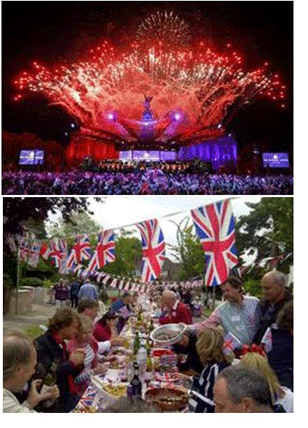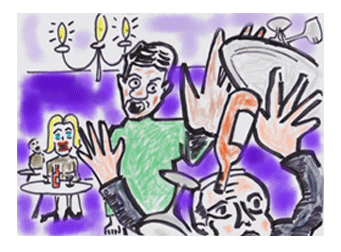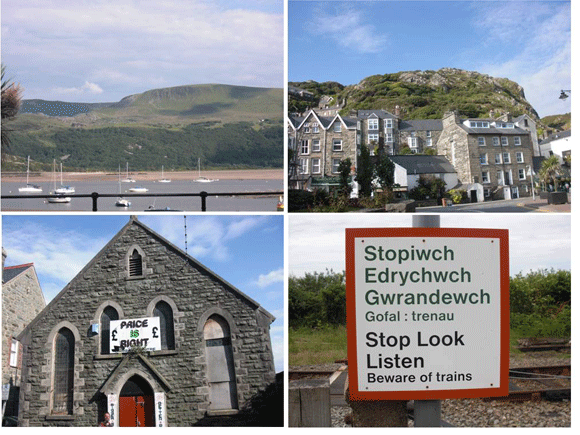How To Use The PRESENT PERFECT SIMPLE Tense In English With ALL Its Meanings

How can I use the Present Perfect Simple tense?
Hello I’m Jane at DailyStep English and in this lesson you will learn ALL ways to use the Present Perfect Simple tense in English.
How to use this page:
1. Listen to and read the free lesson carefully. If possible, read it aloud.
2. Take the FREE QUIZ at the bottom of the page to check your understanding.
The Present Perfect Simple Tense
by Jane Lawson at DailyStep.com
You learn this tense early in your English journey, at Low Intermediate Level.
However as the Present Perfect Simple tense does not have an equivalent tense in many languages, it often causes confusion even for Advanced Level English learners.
In this lesson, you will learn all the ways to use the Present Perfect Simple tense, and I’ll follow this lesson in future Free DailyStep English Lessons with plenty of quizzes and other interactive exercises to make sure you understand it fully and can use it with confidence.
First, and very important, please remember that the Present Perfect Simple is only used as a past tense when we refer to Unfinished Past Time.
You need to understand the difference between Finished and Unfinished Past Time, so if you missed my Free DailyStep English Lesson on this topic, you can find it here.
You can learn how to form the Present Perfect Simple here:
So, let’s take a look at all the different ways we can use the Present Perfect Simple in English:
1. We use the Present Perfect Simple when we talk about something that started in the past and continues in the present.
In this DailyStep English Timeline, the red arrow represents something that started in the past and continues now.

Examples:
He loves his job. He has worked there for over 20 years. (note: he still works there now.)
How long have they been married? (note: they are still married now.)
Mobile phones have been in use for many decades now. (note: mobile phones are still in use now.)
He has lived in the same house since he was a child. (note: he still lives in the same house now.)
You can see that these examples all refer to situations that still continue now, in other words, situations in the Unfinished Past.
But if we want to give more information about these situations, we might need to use a Finished Past Tense, such as the Past Simple or the Past Continuous.
Let’s look at how this works in the example sentences. The Finished Past tenses and Finished Past time references are all underlined.
Examples:
He loves his job. He has worked there for over 20 years.
He started his job when he was 21 years old.
How long have they been married?
They got married ten years ago so they have been married for ten years.
Mobile phones have been in use for many decades now. The first telephone call from a handheld telephone was made on April 3rd 1973.
He has lived in this house since he was a child. His family moved there after his father qualified as an engineer.
2. We often use the Present Perfect Simple with FOR and SINCE.
What is the difference between FOR and SINCE?
Something happens or exists FOR a period of time.
Something happens or exists SINCE a point in time or a fixed period of finished time.
Examples:
He has lived in this house for 25 years.
He has lived in this house since he was a child.
They have been married for ten years now.
They have been married since their wedding ten years ago.
Please note that both FOR and SINCE also have other uses in English. You can learn more about them in Free DailyStep English Lessons coming soon.
3. We often use the Present Perfect Simple with HAVE BEEN and HAVE GONE.
What is the difference between HAVE BEEN and HAVE GONE?
We use have been/has been with the Present Perfect Simple when someone has gone to a place and has now returned from that place.
We use have gone/has gone with the Present Perfect Simple when someone has gone to a place and is still there now.
Examples:
I have been to Paris this month. (note: this means that I went to Paris and I have now returned from Paris)
Peter has gone to Paris and he will be back on Saturday. (note: Peter is still in Paris now.)
She is not at home now. I think she has gone to work. (note: she is still at work now.)
4. We use the Present Perfect Simple when we talk about life and experience up to the present.
Note: We can only use this structure for people who are still alive.
In this DailyStep English Timeline, the red arrow represents life and experience up to now.

Examples:
I have never been to Argentina. Have you? (note: the short answer here is either “Yes, I have” or “No, I haven’t”.)
Have you ever tried mountain climbing? (note: again, the short answer here is either “Yes, I have” or “No, I haven’t”.)
He has lived in more than ten different countries.
Many books have been written on this topic. Eight of them were written in the 20th Century and the others have all been written since the turn of the century.
This is the most difficult puzzle that I have ever attempted.
I have seen that movie three times. How many times have you seen it?
5. We use the Present Perfect Simple to talk about completed actions or events in the Unfinished Past.
So, we often use the Present Perfect Simple to talk about the news, and about things that happened in the past but are important in the present.
In this DailyStep English Timeline, the red cross represents a completed action or event, and the red arrow represents a period of Unfinished Past Time – in other words, a period of time connected to NOW.

Examples:
The world has changed a lot in the last ten years.
There have been many changes recently.
The motorway is closed. There has been an accident.
The election result has been announced. We now know who the winner is.
His car hasn’t been serviced for over 2 years.
I have lost my keys so now I can’t open the door.
6. We often use the Present Perfect Simple with time adverbials such as JUST, ALREADY, YET and RECENTLY.
Examples with JUST:
He has just arrived. (note: this means “He arrived a short time ago.”)
“Are you hungry?” “No. I’m not. I’ve just eaten. I had lunch half an hour ago.
(note: when we use AGO in a sentence, we need to use the Past Simple tense. You can learn more about this in my Free DailyStep English lesson on the difference between Finished and Unfinished Past Time.)
Examples with ALREADY:
I have already finished the task. (note: in this sentence, using ALREADY makes it sound as if I finished the task sooner than expected.)
The parcel has already been delivered according to this email, but I can’t find it anywhere.
Examples with YET:
Have you seen that film yet? I think you will love it.
I don’t think he has arrived yet. I can’t see his coat on the hook.
Examples with RECENTLY:
Scientists have recently discovered a new way to treat cancer.
Have you called your mother recently?
7. We use the Present Perfect Simple tense to refer to past actions that are repeated.
It is important to note we need to say or ask about how many times it was repeated, or use a quantifier such as several, many or a few.
Otherwise, we need to use the Present Perfect Continuous tense, as this implies that the action is repeated even if we do not say the number of times it happened.
In this DailyStep English Timeline, the red crosses represent repeated actions where we say how many times, and the red arrow represents a period of Unfinished Past Time.

Examples:
They have been there 4 times this year.
How many times have you met him?
I have met him several times.
The school has been closed twice this year.
8. We can use the Present Perfect Simple tense in time clauses with a future meaning.
We can also use the Present Simple and the Present Continuous tenses in the same way. We use the Present Perfect here if we want to emphasise that the action is finished.
In this DailyStep English Timeline, the red cross represents a completed action or event, and the red arrow represents a period in the future.

Examples:
We’ll give her the present after we have had dinner. (note: in this sentence, we can also say “We’ll give her the present after we have dinner.” But by saying …”after we have had dinner” we emphasise that the dinner is finished.)
As soon as he has done his homework, he can go to the park. (note: in this sentence, we can also say “… as soon as he does his homework.”)
I will keep looking for my keys until I have found them. (note: in this sentence, we can also say “… until I find them.”)
9. We can use the Present Perfect Simple tense with a future meaning in First Conditional clauses.
We can also use the Present Simple and the Present Continuous tenses in the same way. We use the Present Perfect here if we want to emphasise that the action is finished.
Examples:
We will only go on holiday if we have saved enough money to pay for the tickets.
What will you do if your son hasn’t arrived home by the time you get there?
If I have finished my essay by this evening, I will join you for dinner. Otherwise, I will stay at home and work on it. (note: in this second sentence, “Otherwise…” means “But if not…”, or “But if I have not finished my essay by this evening…”)
You can learn more about First Conditional Clauses here.
So, now you know how to use the Present Perfect Simple tense in English. How many ways are new for you?
Thank you for taking this Free DailyStep English Grammar Lesson.
Now, please take this Free DailyStep English Quiz to check your understanding of the Present Perfect Simple Tense:
If you like this lesson, please share it. Thank you 🙂
If you enjoyed my Audio Blog, please share it. Thank you 🙂
How to speak English fluently and understand fast English
DailyStep English Audio Lessons are designed to help you learn to speak and understand English at the speed that we speak it.
No matter how good your English is, you need to be able to follow a fast conversation in order to participate.
DailyStep English courses are fully accredited and you can get an internationally-recognised certificate for your CV or resume.
How to use your lessons:
How to slow the audio:
How to Start Daily Audio Lessons
✔ Daily Audio Lessons + Premium Audio in my Blog Library
✔ Your lessons never expire – you can take them again any time
✔ Change your level any time
✔ 100% happy or your money back!




